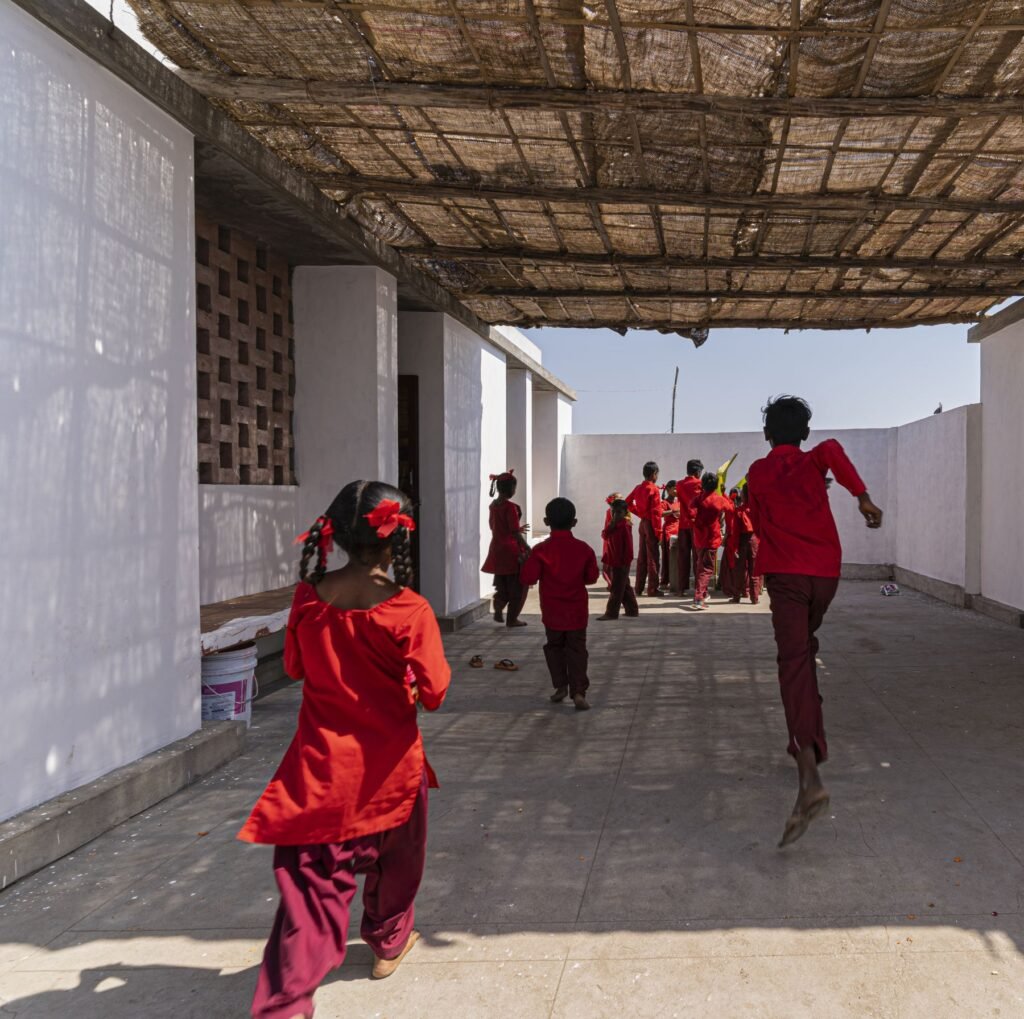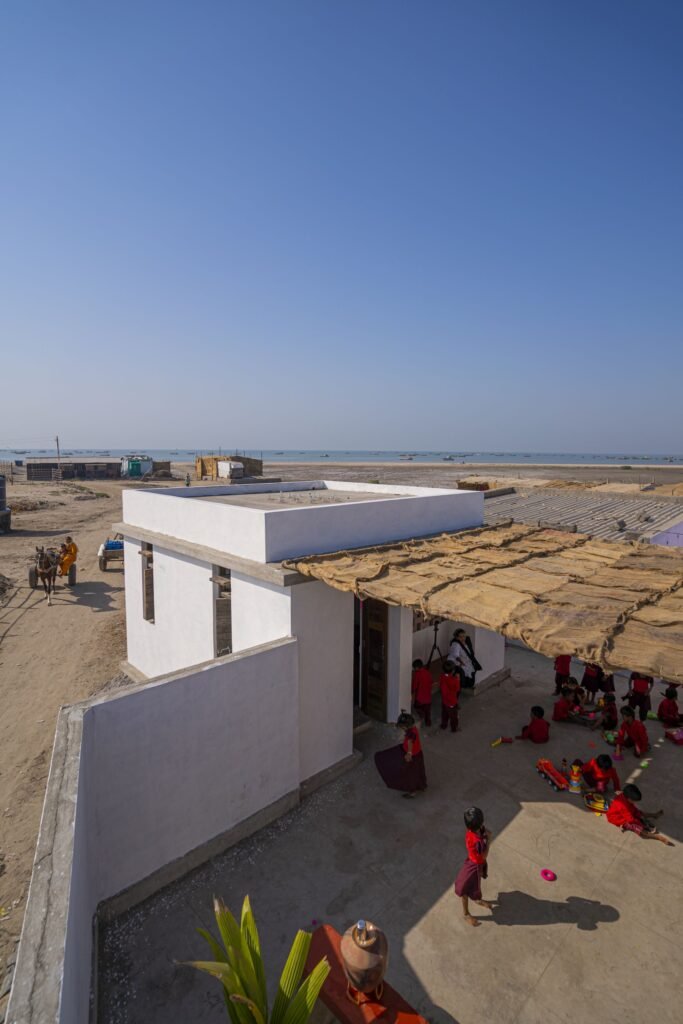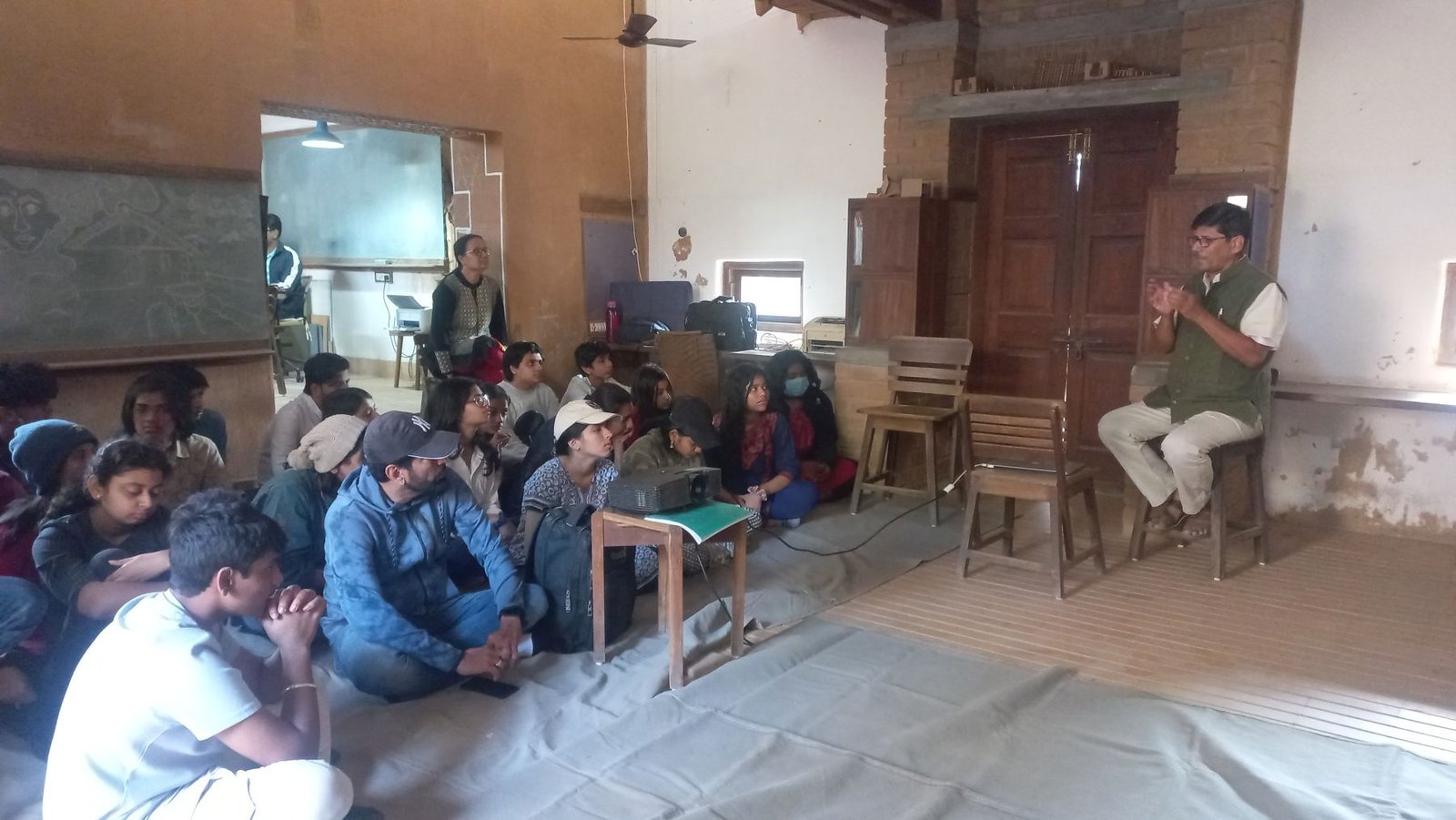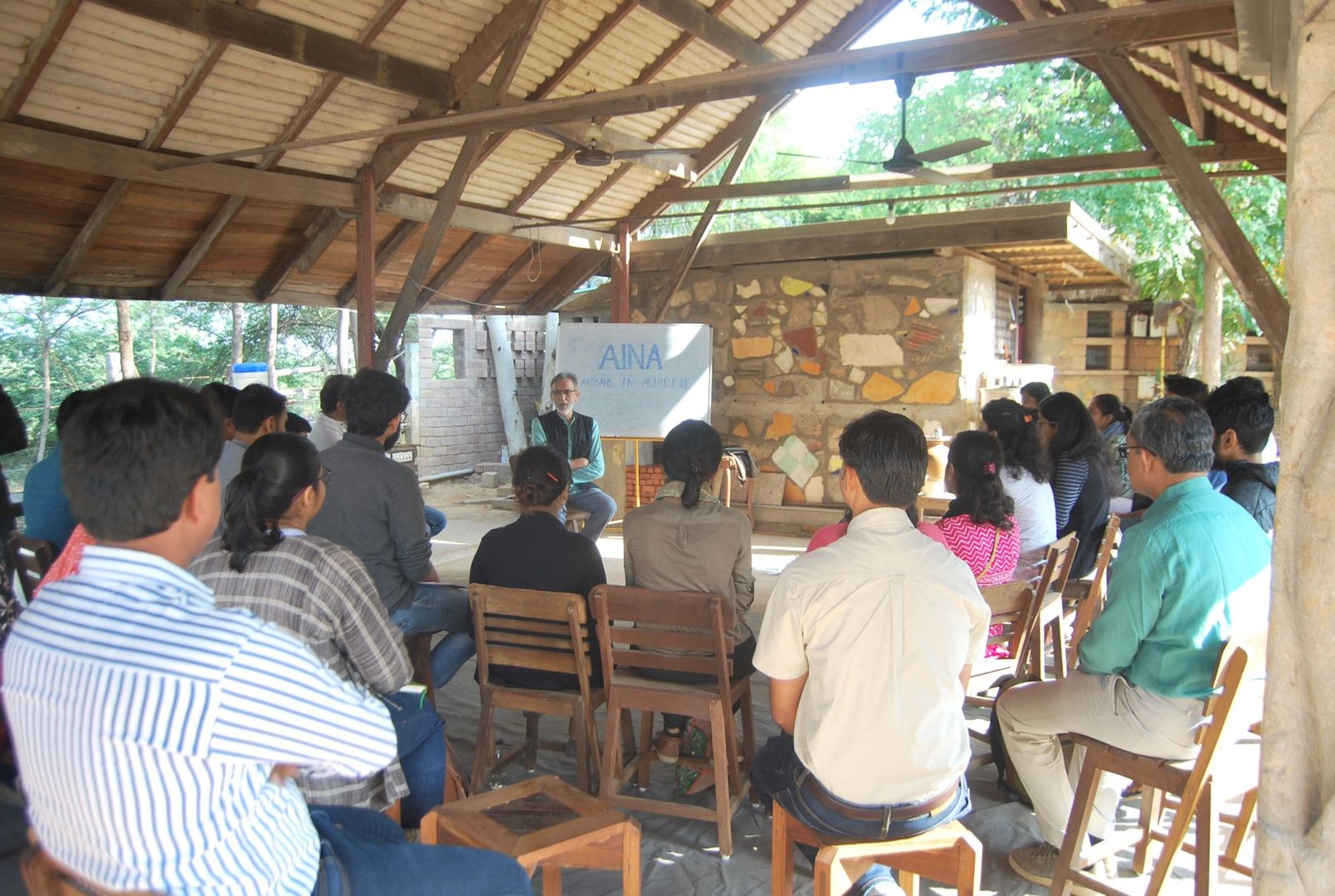
The Yusuf Meherali Centre (YMC), in collaboration with Mette Lange Architects and Hunnarshala, has taken a remarkable initiative to build a small school for the fisherfolk communities residing along the coast of Bhadreshwar, Mundra. This endeavour aims to ensure that the children of these communities do not miss out on the opportunity of education, despite their nomadic lifestyle and challenging living conditions.
The fisherfolk communities, along with other livelihood-dependent groups in the arid Kutch region, often migrate to remote areas in search of sustenance. The pastoralists lead their animals to grasslands, mangroves, and forests, while the salt workers and fisherfolk reside in the intertidal zones of the sea for extended periods, engaging in salt production or fishing activities. They return to their villages only for a short span of four months, typically during the monsoon season, to celebrate festivals and important events before embarking on their journeys once again.
Recognising the importance of education for the children of these communities, the Yusuf Meherali Centre (YMC) has been operating schools for them directly on the coasts. However, due to the transient nature of their settlements, these schools have been constructed using temporary materials such as gunny bags, tents, and plastic sheets. To address this challenge and provide more permanent educational facilities, Henning Larsen from Denmark collaborated with the YMC, and Mette Lange Architects joined the efforts to design and construct “Moving Schools” specifically tailored for such communities.
In their pursuit of building a small school with three classrooms and a communal open space, the project team faced numerous environmental constraints. The site is exposed to harsh weather conditions, with relentless sun, strong winds, and the corrosive impact of sea waters eroding any foundations built. In response, the design incorporated strategies to withstand these challenges. Stone pitching was employed to safeguard the school’s foundations, while the walls and roof were constructed using stabilised earth sourced from the nearby area. The use of stabilised earth not only provides thermal insulation, keeping the rooms cool in the scorching heat, but also offers protection against corrosion caused by the saline winds.

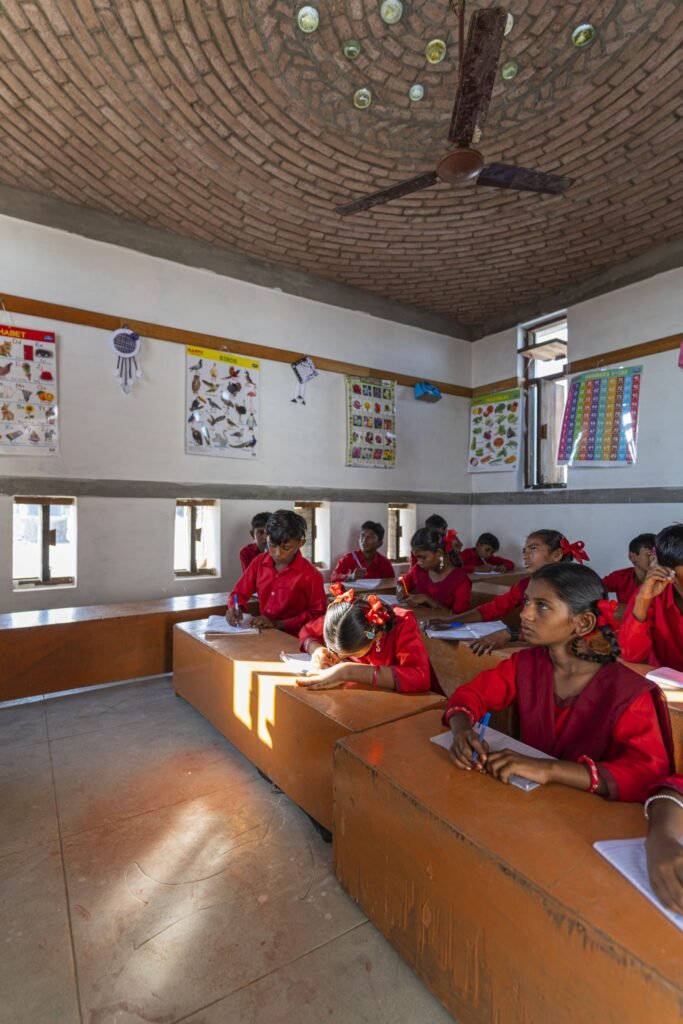
The most striking architectural feature of the school is the inclusion of shallow masonry domes. These domes were constructed without the need for traditional formwork, employing stabilised adobe bricks and cement mortar that could be easily produced on-site. This construction method not only reduced the carbon footprint associated with transporting materials but also allowed for greater flexibility and adaptability during the construction process.
The shallow domes serve multiple purposes. Firstly, they enhance the aesthetic appeal of the school, creating a visually appealing space for the children to learn and grow. Secondly, the domes incorporate vertical openings in the centre, forming a concentric pattern of recycled bottles. This design choice not only allows natural light to flood the rooms, creating a bright and vibrant atmosphere for learning but also serves as an ingenious way to reuse discarded materials.
The collaborative efforts of the Yusuf Meherali Centre, Mette Lange Architects, and Hunnarshala have resulted in a small school that not only caters to the educational needs of fisherfolk communities but also considers the challenging environmental conditions they face. By combining sustainable construction techniques, locally sourced materials, and innovative design elements, this school serves as a beacon of hope, providing a safe and inspiring learning environment for children who would otherwise miss out on education due to their nomadic lifestyle.
